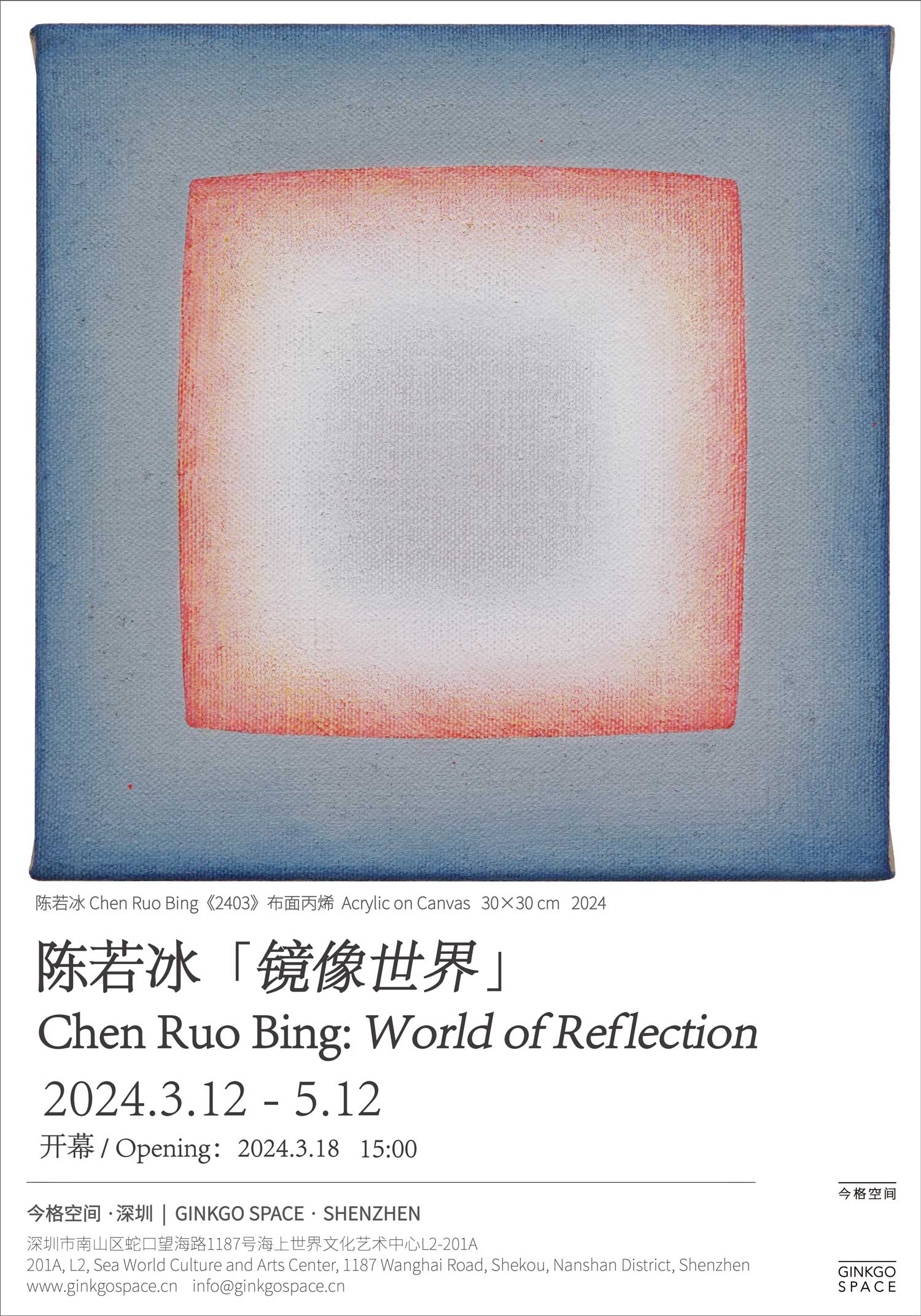展期 Period:
2024.3.12—2024.5.12
艺术家 Artist:
地点 Venue:
新闻稿 Press Release:
今格空间荣幸地宣布,陈若冰在今格空间的第六次个展“镜像世界”将于2024年3月18日开幕,本次展览是艺术家在深圳的首次个展。
展览将围绕陈若冰标志性的创作语言——光、色彩与场域之间的关系展开,在近年的创作实践中,陈若冰将画面中层层叠如渲染般的中国传统绘画手法与对色彩的觉知潜入地交融,正如艺术家所说,光是意识的觉悟、是运动,它总是在瞬间。光是平和,在智慧和完美的时刻。这就是本性的镜像。展览持续至5月12日。
在德国旅居的三十多年中,陈若冰的工作室远离杜塞尔多夫市中心。他离群索居,工作室宛如一座供奉光的神庙,每日他都在其中徐徐地修行。何为光?何为色彩?东方的佛教传说中的“佛影窟”昭示着光对于很多修行者而言是一种更为高等级的意识状态的象征。影窟中的朦胧光影墙面承载着观看者的本心,作为一个光之能量居所,它邀请信徒的心灵栖息;德国思想家歌德也曾在他的《色彩论》中强调光的用途,更准确的说是色彩的作用,对于他而言色彩不仅仅是物理与生理,它还能对人的灵魂产生影响。他写道:“因此色彩,作为艺术的一种元素,能帮助(我们)实现最高的美学目标。”
光(色彩)让陈若冰瞥见澄明。弥散的光是它绘画中的「吸」,画中形体间的平衡则是绘画中的「呼」,这一呼一吸画便有了生命。陈若冰探求各个形体的造型能力,根据不同的视觉心理感受去运用它们,让它们彼此呼应,彼此对话。如画中圆柱形、方形、椭圆形、环形、长方形等等,圆为天,地为方,让方和圆对话,化圆为方。陈若冰认为:秩序在画面中的建立和延伸导致抽象的存在。不同的艺术家通过不同的途径来达到从物质到精神的转换。真正的抽象艺术作品在反应出人的精神现实的同时所建立起来的是艺术的现实本身。
Ginkgo Space is delighted to present the upcoming solo exhibition by Chen Ruo Bing, titled “World of Reflection” opening on March 18, 2024.
This exhibition is the artist's first solo exhibition in Shenzhen, the sixth solo exhibition in Ginkgo Space. The exhibition will revolve around Chen Ruo Bing's signature creative language - the relationship between light, colour and field. In recent years, Chen Ruo Bing's creative practice has been a submerged blend of traditional Chinese painting techniques, such as rendering layers on top of each other, and the awareness of colour. As the artist says, light is the awareness and movement of consciousness, which is always in the moment. Light is peace, in the moment of wisdom and perfection. It is the reflection of nature. The exhibition will run until May 12, 2024.
During his over thirty years of residence in Germany, Chen Ruo Bing's studio was located far from the bustling center of Düsseldorf. He lived in seclusion, his studio akin to a temple devoted to light, where he engaged in daily contemplation. What is light? What are colors? The "Buddha Cave with Shadow Image" from eastern Buddhist legends signifies light as a symbol of a higher state of consciousness for many Buddhist practitioners. The ethereal play of light and shadow within the cave walls reflects the true nature of the viewer's mind. As a sanctuary of luminous energy, it beckons the soul of the faithful. German thinker Goethe also emphasized the significance of light, or more precisely, the role of colors, in his "Theory of Colors." For him, colors transcend mere physics and physiology, impacting the human soul. He wrote: "Therefore, color, as an element of art, can contribute to achieving the highest aesthetic goals."(Deshalb denn Farbe, als ein Element der Kunst betrachtet, zu den höchsten ästhetischen Zwecken mitwirkend genutzt werden kann.)
Light (color) grants Chen Ruo Bing glimpses of clarity of mind. The diffused light serves as the "inhale" in his paintings, while the balance between forms constitutes the "exhale"; this rhythmic exchange infuses the paintings with life. Chen Ruo Bing explores the abilities of modelling of various shapes, employing them according to different visual psychological experiences, allowing them to resonate and converse with each other. Shapes such as cylinders, squares, ellipses, rings, rectangles, and others dialogue within the paintings. Circles represent heaven, squares represent earth, and by facilitating dialogue between them, circles are transformed into squares. Chen Ruo Bing believes that the establishment and extension of order within the composition lead to the existence of abstraction. Different artists achieve the transition from the material to the spiritual through various means. Real abstract artworks not only reflect the spiritual reality of humanity but also establish the reality of art itself.

